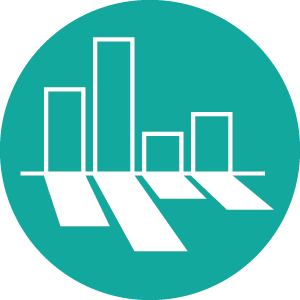
Gathering Feedback from Students
Explore methods for collecting student feedback at critical points in the semester and use the information to inform your teaching and promote student learning.
Collecting feedback from students at critical points in the semester is a valuable source of information that can inform your teaching and promote student learning. You can elicit feedback that tells you how well students understand concepts, how well they feel they are learning, or to inform you of aspects of the course that are contributing to or hindering their success. While instructors can use the information to make course adjustments that impact student learning, the feedback process is also an opportunity for students to reflect on their contributions to the learning process and for self-assessment.
Gathering, Analyzing, and Responding to Feedback
-
1
Discuss the importance of gathering feedback with students and how it contributes to an effective learning environment.
-
2
Determine times during the semester when feedback would be most useful for you as the instructor and for them as learners (e.g. after the first exam, while teaching a particularly difficult concept, and mid-semester are common).
-
3
Create a survey, using any of these tools for gathering feedback:
- The Canvas Classic Quizzes tool can be used to make an anonymous survey
- Zoom poll tool: for multiple choice questions only during synchronous sessions
- Microsoft Forms: an easy-to-use tool available via Office365 campus license
- Qualtrics: your favorite research tool can be used for teaching.
-
4
Analyze the feedback. Discuss it with a colleague or make an appointment with one of the Center for Integrated Professional Development staff to review and discuss your findings.
-
5
Follow-up with the class to let them know what you heard and how you plan to use the feedback as you move through the semester.
Midterm Chats
Small Group Instructional Diagnosis (SGID) and Group Instructional Feedback Technique (GIFT).
Known as Midterm Chats at ISU, these two consensus-building processes enable instructors to gain insights into students’ perceptions about class and their learning. This process occurs in weeks 5-10 of the semester and offers the opportunity for instructors to make adjustments to the course that will impact student success. Information for these processes can be found on the Midterm Chat
Additional Resources
Resources for evidence-based methodologies you can use to collect feedback from students include:
- Plus/Delta Assessment from Iowa State University Center for Excellence in Learning and Teaching
- Critical Incident Questions (Brookfield, 2017)
- Start-Stop-Continue (Hoon et al., 2015)
- Tips from George Washington University Teaching and Learning Center
References
Barbeau, L., & Cornejo Happell, C. (2023). Critical Teaching Behaviors. Routledge. https://doi.org/10.4324/9781003443902
Brookfield, S. (2017). Becoming a critically reflective teacher (2nd ed.). San Francisco, CA: Jossey-Bass.
Clark, D. J., & Redmond, M. V. (1982). Small Group Instructional Diagnosis, Final Report. Educational Resources Information Center (ERIC).
Helminski, L., & Koberna, S. (1995). Total quality in instruction: A systems approach. In H. V. Roberts (Ed.), Academic initiatives in total quality for higher education (pp. 309–362). Milwaukee, WI: ASQC Quality Press.
Hoon, A., Oliver, E., Szpakowska, K., & Newton, P. (2015). Use of the ‘Stop, Start, Continue’ method is associated with the production of constructive qualitative feedback by students in higher education. Assessment & Evaluation in Higher Education, 40(5), 755–767. https://doi.org/10.1080/02602938.2014.956282
Written by Dana Karraker, Assistant Director for Educational Development Programs, Center for Integrated Professional Development. Last updated 10/21/2025